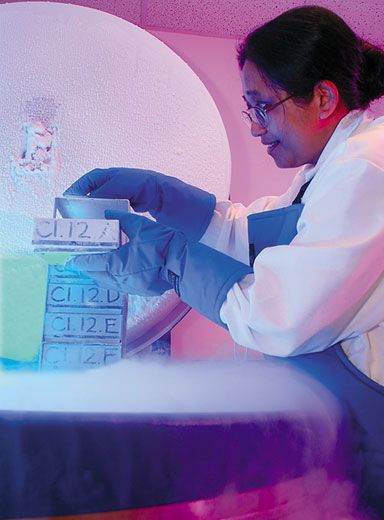Icons and Insights
Icons and Insights
/https://tf-cmsv2-smithsonianmag-media.s3.amazonaws.com/filer/From-the-Castle-Nor-Faridah-631.jpg)
The Smithsonian is built on a foundation of vast and varied collections—American icons such as the meticulously preserved Star-Spangled Banner and the Apollo 11 command module; Chinese bronze and jade artwork from as far back as 5,000 years ago and a comparatively modern Michelangelo drawing, a mere 500 years old; cultural touchstones like Dorothy’s ruby slippers from the Wizard of Oz and Fonzie’s leather jacket. But our collections are more than just a means to recount history. They also provide a wealth of data that researchers can use to gain insights into some of the world’s most pressing problems.
Scientific collections acquired a century or more ago are being used to address challenges such as climate change, the identification of invasive species and the control of deadly diseases. Smithsonian animal tissue samples from the late 1800s have allowed researchers to trace an immunodeficiency virus related to HIV-2 back to 19th-century Africa. Preserved bird specimens have enabled scientists to compare avian influenza with the devastating 1918 human flu strain. This study showed that the avian and human flu strains were not related, as was previously thought. That knowledge will help guide future research on how to prevent pandemics.
Smithsonian collections also contribute to endangered species recovery, reproductive biology, genome resource banking, medical research, forensic analysis, bio-security and worldwide conservation policy. Our collections are especially useful in proteomics, the study of the structure and function of proteins. This increasingly important field of biological and medical research will allow us to probe artifacts and specimens to explain how they came into existence, where they came from and what causes them to deteriorate. Proteomics gives us important new techniques for examining the dynamic activities of organisms within a population and the roles they have played within ecosystems.
As concrete evidence of historical trends, scientific collections help researchers anticipate the future. Yet perhaps what is most exciting about scientific research is that we usually have no idea what will spring from it. As the theoretical physicist Hendrik Casimir once noted about modern scientific breakthroughs, “I think there is hardly any example of twentieth century innovation which is not indebted...to basic scientific thought.” The truth is that sometimes applications won’t present themselves for years or decades. The Smithsonian will continue to provide our collections not just for display to the public, but also to spur revolutionary insights yielded by scientific research. Those insights will be well worth the wait.
G. Wayne Clough is Secretary of the Smithsonian Institution.
/https://tf-cmsv2-smithsonianmag-media.s3.amazonaws.com/accounts/headshot/wayne-clough-240.png)

/https://tf-cmsv2-smithsonianmag-media.s3.amazonaws.com/accounts/headshot/wayne-clough-240.png)